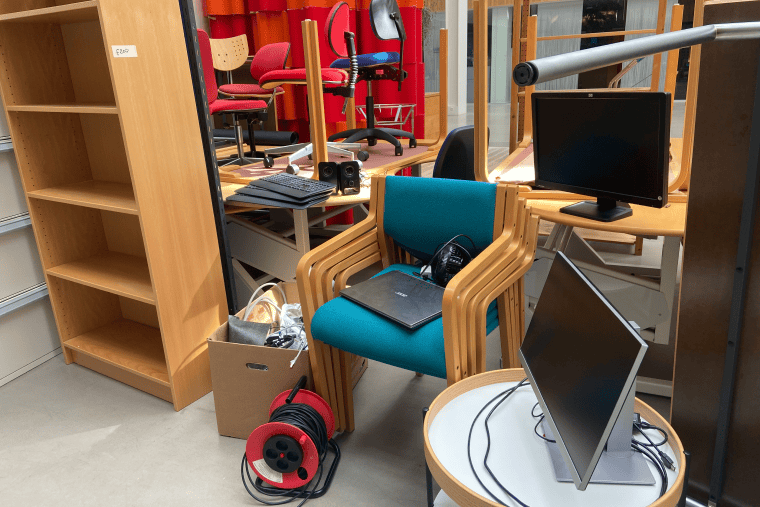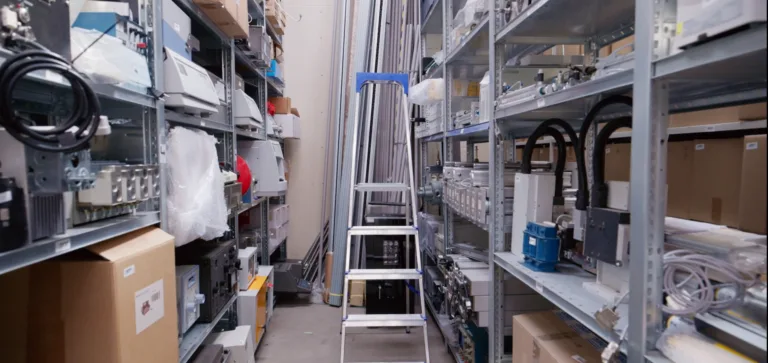In today’s business environment, many organizations face the ongoing challenge of managing their physical assets efficiently. A problem we discovered during recent interviews with Danish companies is the issue of hidden or “lost” resources—items that are stored away, rarely used, and frequently forgotten. These assets, which can include everything from office furniture to specialized equipment, represent a significant and often overlooked cost. The failure to effectively manage these resources can lead to unnecessary expenditures, operational inefficiencies, and missed opportunities for promoting sustainability.
The Problem of Hidden Resources
Over time, organizations tend to accumulate a vast number of assets through purchases, upgrades, or expansions. However, these assets often end up scattered across various departments and storage locations, with knowledge of their existence limited to a few individuals. As organizational knowledge shifts due to staff changes or restructuring, these resources can become forgotten, essentially becoming lost. This leads to a situation where employees, unaware of the existing resources, request new purchases—adding to the already underutilized stockpile.
This scenario presents several challenges:
Financial Waste: Continuously purchasing new items instead of utilizing existing ones leads to unnecessary financial waste. Moreover, the need to expand storage for new items, adds to the economic waste.
Operational Inefficiencies: When employees cannot easily locate necessary resources, processes slow down, creating inefficiencies. The time spent searching for or requesting new items also drains organizational resources. When the item is located and then borrowed, the overview of who has what is often lost.
Environmental Impact: The constant purchase of new items, when usable resources already exist, contributes to environmental harm. This practice increases waste, consumes more raw materials, and enlarges the organization’s carbon footprint.
The Importance of Effective Asset Management
To address these challenges, companies must reevaluate how they manage their physical assets. Effective asset management is not just about maintaining a record of what exists; it’s about actively ensuring that all resources are fully utilized. Key strategies include:
- Enhancing Transparency and Visibility: Organizations need systems that provide a comprehensive overview of all assets across departments and locations. This transparency helps ensure that employees utilize available resources before requesting new purchases. Centralized asset management systems that track inventory in real time can facilitate this visibility.
- Optimizing Resource Utilization: Once visibility is established, the focus shifts to optimizing resource use. This could involve processes that allow for easy sharing and redistribution of assets across departments, ensuring that no item is left idle when it could be valuable elsewhere. Regular audits of asset usage can help identify underutilized items for redeployment or sustainable disposal.
- Integrating Sustainability: Modern asset management must align with sustainability goals. By prioritizing the reuse and redistribution of existing resources, companies can significantly reduce their environmental impact. Extending the lifecycle of assets through maintenance or refurbishment further enhances sustainability efforts.
- Data-Driven Decisions: Leveraging data is crucial for effective asset management. Tracking usage patterns enables organizations to make informed decisions about asset purchases, maintenance, and retirement. Data insights can also help quantify the financial and environmental benefits of better asset utilization, providing a clear return on investment.
Exploring Asset Management Practices: Join Our Research Study
As part of our commitment to understanding and improving asset management, we are conducting a research study to explore how companies track and manage their assets. This study aims to uncover best practices, identify common challenges, and gather insights on how businesses are preparing for future demands, including sustainability requirements.
We are currently seeking participants to contribute to this research. By participating, your organization can gain valuable insights into your own asset management practices and help shape future solutions that benefit the wider business community.
Looking Ahead: The Future of Asset Management
As businesses face growing pressure to operate more efficiently and sustainably, effective asset management will become increasingly vital. Organizations that prioritize transparency, resource optimization, and sustainability in their asset management strategies will not only reduce costs but also improve operational efficiency and contribute to environmental goals.
By shedding light on hidden resources and embracing more effective asset management practices, companies can unlock significant value—both financially and environmentally. If your organization is interested in optimizing asset management or participating in our research study, we would love to hear from you. Together, we can explore how to turn lost assets into opportunities for growth and sustainability.

